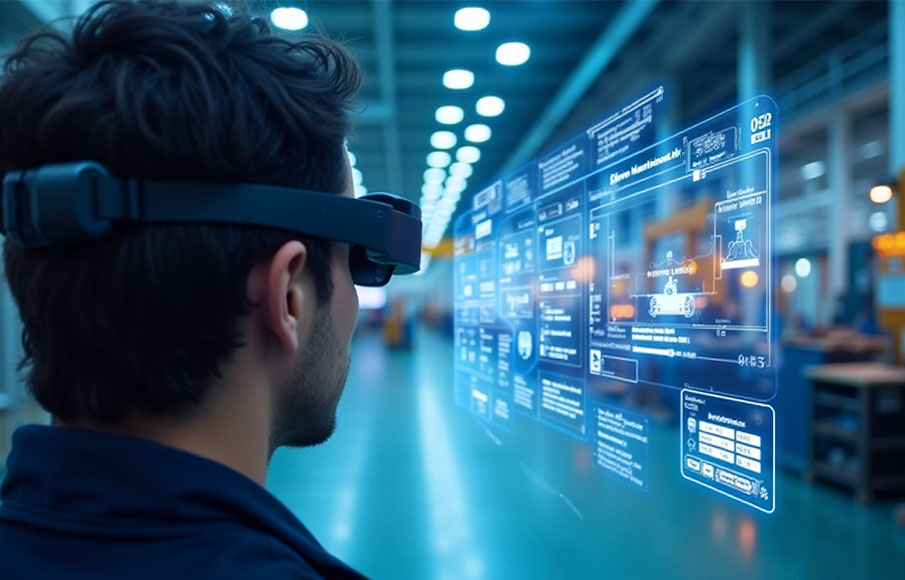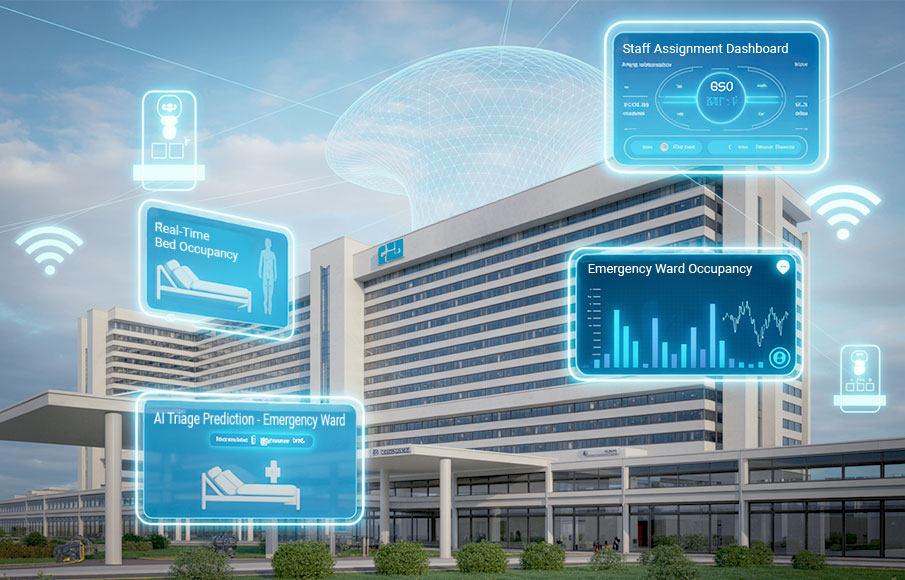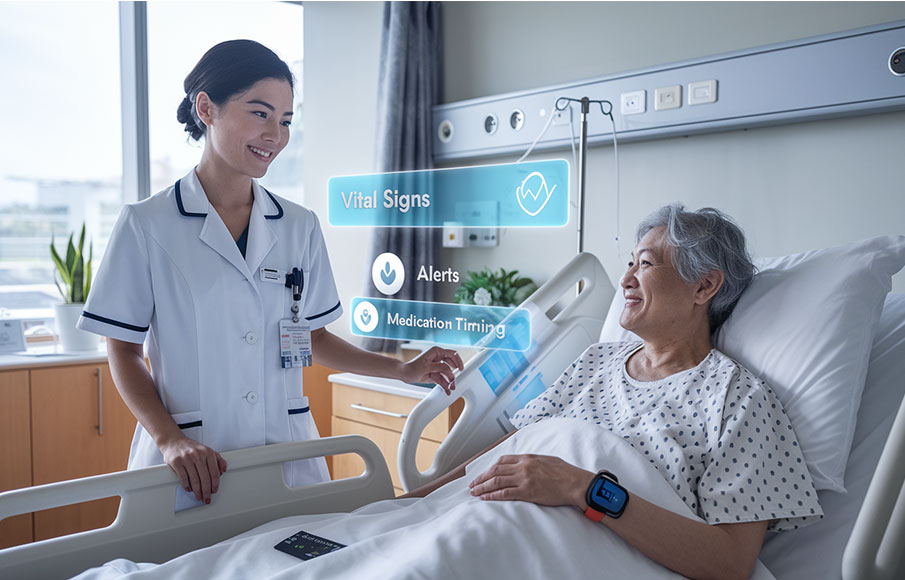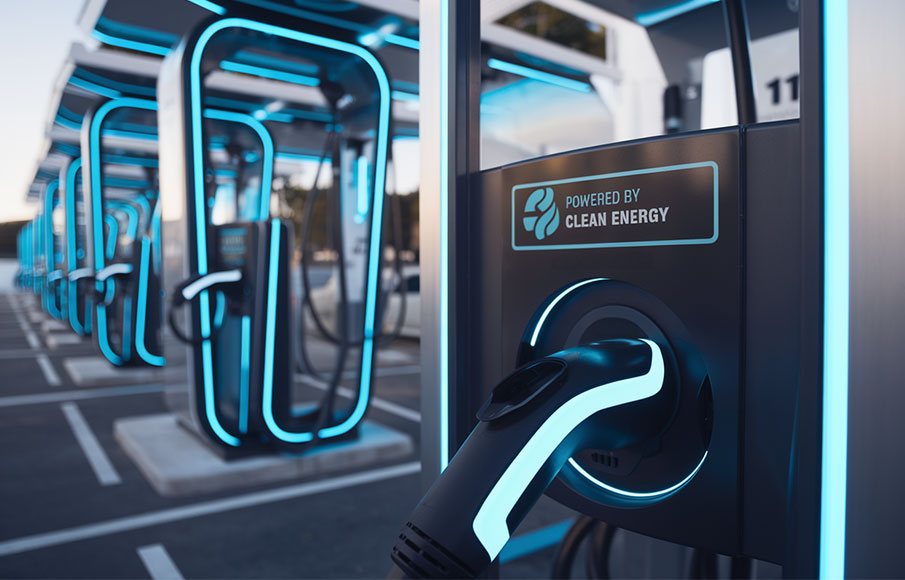Technology in Education: Digital Classroom Transformation in Singapore
- 13 May 2025

In an era of rapidly advancing technology, educational institutions in Singapore need to be intelligent, responsive, and digitally equipped. Institutions such as NUS are actively pioneering the integration of IoT devices and smart solutions into their campuses, in order to create more efficient, secure, and engaging learning environments.
This Digital Classroom Transformation movement leverages technology to streamline administrative processes, empower students and staff, provide seamless access to resources, and facilitate a support structure that revolutionises how education is delivered. It grants educators the ability to facilitate and support learning anytime and anywhere, and bypasses the limitations of physical space through the use of communication technology. In-school learning becomes connected with the outside world thanks to these digital learning spaces.
As institutions explore these possibilities, there is a growing need for resilient and high-performing networks, heightened emphasis on cyber security and increased consumption of compute resources. To create a seamless digital classroom experience, a more holistic approach to ICT in education is required. Traditional network models simply do not have the capacity to meet the high demands of education in the digital age. Businesses like SPTel stand at the ready to provide support through reliable internet services, which supplement these initiatives and ensure they run smoothly.
The Impact of Technology on Singapore’s Education System

Technology is reshaping Singapore’s education system, fundamentally changing how students access, engage, and master knowledge in a digital world. We see this in initiatives that focus on:
Enhancing Access and Flexibility
Digital learning has revolutionised education, offering unparalleled access to educational content and fostering greater flexibility for students. The Ministry of Education (MOE) initiatives like the Student Learning Space (SLS) are cornerstones of this effort, creating comprehensive digital learning environments that support hybrid learning models and ensure continuity in education regardless of external circumstances.
Empowering Parents Through Technology
Keeping parents informed and in-tune with their children’s learning journeys is critical in driving academic success. Technology can act as a bridge for efficient communication and timely updates. The Parents Gateway app exemplifies how technology can empower parental involvement. This app facilitates seamless communication between schools and parents, enabling information sharing, consent form management, and a greater understanding of their child’s progress.
The Power of Virtual Classrooms
Video conferencing enables smooth communication in virtual classrooms, facilitating effective communication between students and teachers, wherever they may be. This can open up more possibilities for guest lecturers by distinguished professors from other universities and even cross-border project work. Real-time collaboration applications can work hand in hand with video conferences to allow students to work together on projects and share ideas without interruption.
Enhanced Learning with Virtual Reality
Virtual reality can lead to enhanced experiences for fields of study where concepts are abstract and hard to visualise or understand. A team from Singapore Management University has been researching how virtual reality, or VR, can be used in teaching undergraduate university students’ key concepts in computing. The team have created a virtual reality environment called ‘VR Computing Lab’ to aid them in getting to grips with abstract computing concepts. With VR Computing Lab, not only can students interact with these concepts and engage with tailored practice activities and tutorials, but they can engage with the environment built by the team. Through interacting with their peers and instructors, they can choose how to engage with the activities and build confidence and competence in their skills.
Source: https://research.smu.edu.sg/news/virtual-reality-classroom-creating-vr-computing-lab
Personalised Learning Through AI
Personalised learning through AI helps to customise educational content and experiences to individual student needs, strengths, and weaknesses. Through the use of algorithms, educators can further improve engagement by creating customized learning paths. Initiatives such as the Adaptive Learning System (ALS) leverage machine learning to provide such personalised learning options. ALS delivers self-directed learning tools, individualised feedback, and curated resources, all tailored to individual student needs.
Building Smarter Learning Environments
To prepare students for a tech-driven future, Singapore’s education system is integrating IoT to personalise the learning experience and enhance campus operations. Interactive smart whiteboards foster engagement, while e-attendance systems free up educators’ time. Smart sensors, including cameras, increase campus safety and security. Singapore Polytechnic, among other institutions, is actively implementing some of these smart solutions to create a connected and secure learning environment.
However, while these technological tools hold immense promise, realising their full potential requires addressing key challenges to build a truly robust and reliable digital classroom.
3 Key Challenges to Building a Digital Classroom

1. Network Reliability and Performance
Implementing a digital classroom faces challenges like managing fluctuating online traffic due to varying student numbers and activities, including unexpected surges during peak times like exam periods. This requires frequent, rapid network configuration adjustments to maintain optimal performance and minimise disruptions to learning. High bandwidth and compute heavy applications such as AI, VR and Video analytics/conferencing will not only cause a strain on network resources but will also result in higher compute requirements. This can lead to increased complexity for networks and on-site servers to deliver responsive and uninterrupted application performance.
2. Security and Data Protection
A significant hurdle is ensuring robust security measures to protect sensitive student and teacher data from breaches, especially with a large user base that is relying on technology to take exams and submit papers, provide feedback, grading and more. There are also difficulties in promptly responding to real-time security threats, particularly in cases of Distributed Denial of Service (DDoS) attacks that are aimed at bringing down critical functions. This can be particularly disruptive when such attacks target critical functions such as video surveillance systems used for campus security or collaboration portals.
3. Integrating New Technologies
Creating a cohesive and efficient digital ecosystem presents a significant challenge. Integrating advanced technologies like diverse IoT solutions and video analytics systems into a unified educational environment for real-time decision making requires careful planning and execution. Compatibility issues, data silos, and the need for seamless interoperability between various platforms and devices can hinder the creation of a truly integrated and effective digital learning landscape.
Therefore, overcoming these challenges will be crucial to enabling truly effective technology in education.
How SPTel Can Enhance the Digital Classroom Experience
SPTel is a business-class digital services provider that delivers cutting-edge ICT solutions aimed at overcoming your ICT challenges. Here are some offerings that enhance teaching and campus management in the education sector:
Robust and Scalable Connectivity
SPTel offers robust Connectivity Solutions that can help foster an interactive and immersive learning environment.
Clean-Pipe and Scalable Connectivity: SPTel’s Internet plans come with DDoS attack detection by default with the option to mitigate attacks as they happen. This on-demand attack mitigation becomes highly useful when handling cyber threats without the organisation committing upfront to a DDoS attack mitigation subscription.
Furthermore, SPTel offers bandwidth on demand for enhanced scalability. This means that users can increase bandwidth as needed to handle sudden traffic spikes. With these measures in place, the education sector is equipped to respond quickly to disruptions, especially during critical periods such as the digital submissions of final papers. Students and educators will also maintain consistent access to online resources and virtual classrooms, even during peak usage.
Managed Network Solutions
SPTel offers Managed Network Solutions that can reduce the complexity of smart campus connectivity.
Managed Wi-Fi: Get stable and seamless WiFi connectivity across classrooms and campuses with SPTel’s Managed Wi-Fi solution. This means that educators and students alike will enjoy reliable connectivity and improved experiences with collaboration tools. As a managed service, SPTel will provide expert advice to deliver a robust Wi-Fi solution precisely tailored to your unique requirements. Institutions can thus maximise efficiency by removing the complexity and burden of network setup, management, and equipment maintenance from the institution’s IT staff.
Managed Security Solutions
SPTel’s Managed Security Solutions provide an essential layer of protection, safeguarding networks against cyber threats. This is especially vital for educational institutions, where protecting data and privacy is paramount to maintain the confidentiality of student and personnel records and to ensure critical functions remain operational.
Managed Firewall: SPTel’s virtual Firewall solution provides intrusion protection, anti-malware services, web and video filtering, and application control, executed through a best-in-class Fortigate threat intelligence. This solution is deployed at the network level and reduces the need for hardware equipment on site. Best of all, SPTel’s software-defined configuration means that a virtual Firewall instance can be spun up in as short as 1 hour and can be customised to meet your needs.
IoT & Edge Cloud
SPTel can support educational advancements with its IoT and Edge Cloud Solutions. These services empower schools to implement smart technologies with speed and agility, facilitating a high-tech learning environment
IoT-a-a-S: A multi-protocol IoT-as-a-service platform allows for easy device onboarding and management. This means that regardless of your IoT device connectivity requirements (LoRaWAN/5G/WiFi/NBIOT) the platform will be able to collate the data from these devices and store them within a single dashboard. This eliminates data silos and reduces the need for costly integration of multiple dashboards, making it easier and faster to deploy different IoT solutions across the education facility. This scalable solution is provided on an as-a-Service model which means that additional IoT devices can be connected as needed.
Edge Cloud: SPTel’s Edge Cloud offers significant benefits for schools. Users are able to select from multiple Edge Cloud locations hosted across Singapore, giving organisations access to data processing facilities closer to their data source. This allows for improved application responsiveness, meaning applications that support real-time decision making, such as video analytics for security and monitoring, can benefit from peak performance even without server equipment on-premise.
This eliminates the need for on-site hardware and equipment, which can be a hassle to maintain and manage. Space that would have been used to house such equipment can also be converted into other uses such as additional classrooms. The data sent to the SPTel Edge Cloud is stored locally within servers housed in Critical Information Infrastructure (CII), providing data sovereignty for sensitive personal info.
With SPTel, schools can seamlessly integrate cutting-edge technology to create a secure, connected, and future-ready educational ecosystem.
Building the Future of Education with Technology

The modern technological revolution creates ideal opportunities to revitalise and enhance the educational landscape, and create a comfortable learning experience. Secure, reliable, and scalable digital networks are a large part of this, as they help schools and institutions seamlessly integrate their digital tools in classrooms.
In order to meet the needs of modern educational institutions, SPTel makes an effort to understand their needs, and develop solutions that address key issues faced by them on the path to effective digitalisation. We take digital services a step further with our advanced features that cater to the specific needs of schools, promoting a technology-driven approach and preparing educators and students alike for a tech-savvy world.
SPTel is your ideal partner to open innovative pathways in both teaching and learning. Contact us today to find out more about how a well-designed digital infrastructure can transform your education services today.












